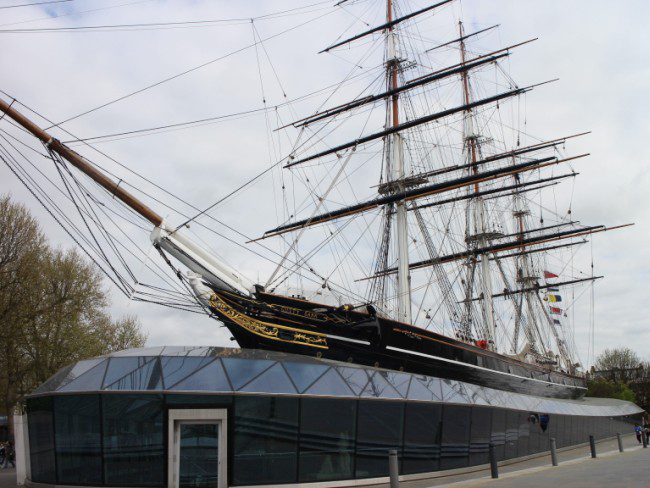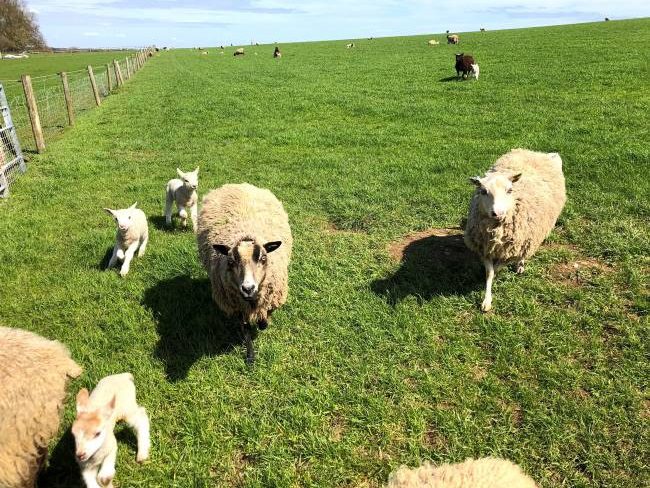Kew Gardens is one of our favourite attractions in London to visit year round. I have had a Friend of Kew annual membership for several years, and it’s one of our go-to places for a day out or place to meet up with friends. Since there is always something new and unique to see throughout the year, I will be sharing advice on what to do and where to go when visiting Kew Gardens by season. In this first post, you’ll find tips for what to see and do this summer in Kew Gardens London.
Located in Richmond, south-west London, Kew Gardens is an UNESCO World Heritage site and has one of the most diverse collections of living plants of any botanical garden in the world.
Read my Autumn in Kew Gardens post to find the best places to see autumn leaves in the Gardens.
Table of Contents
Summer in Kew Gardens London
Rose Garden
One of the highlights of visiting Kew Gardens in summer is seeing the stunning Rose Garden behind the Palm House.
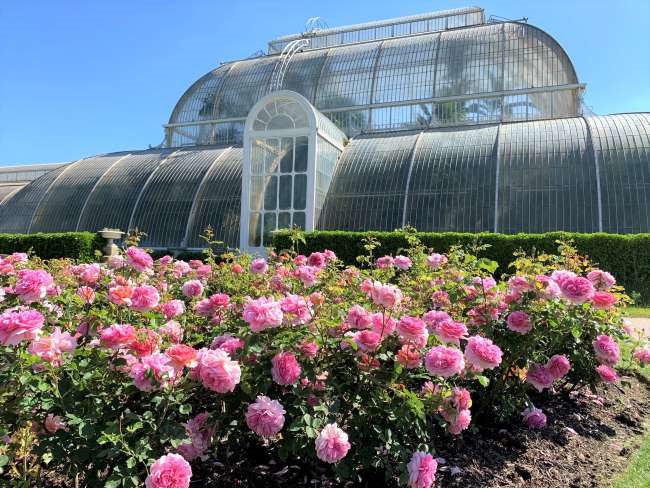
The Rose Garden at Kew Gardens is home to 170 different species and cultivars of rose, with bold plantings of mixed shrub roses.
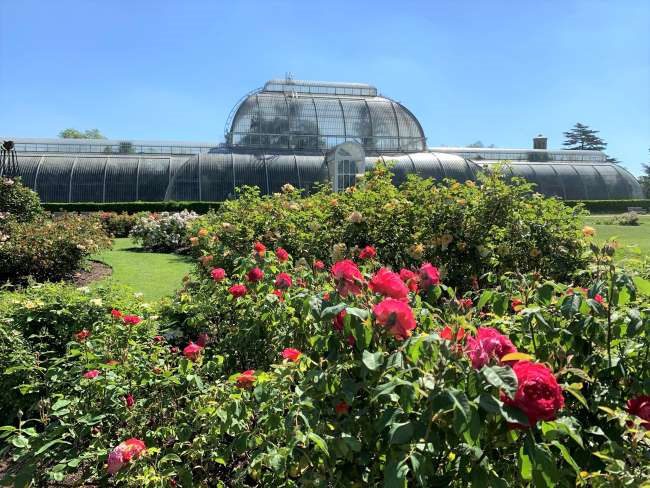
Agius Evolution Garden
Another wonderful garden to see during summer in Kew Gardens is the Agius Evolution Garden, located near the Princess of Wales’s Conservatory. The Agius Evolution Garden is 1.3 acres, with around 700 kinds of plants split up into ‘rooms’ where closely related plants are grouped by plant families and related families are grown together.
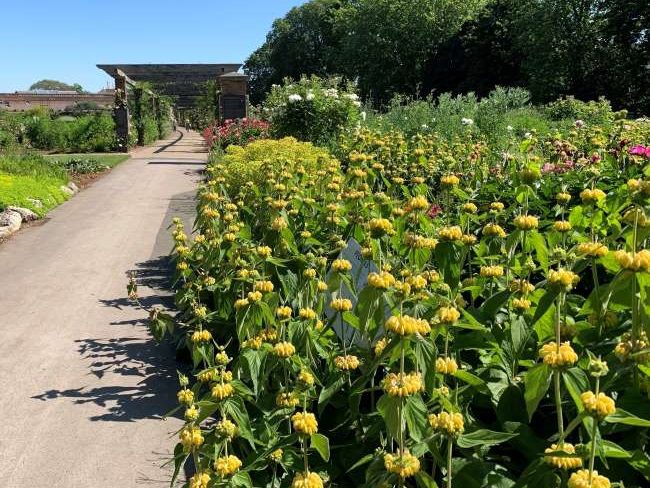
Related: Best Places to See Spring Flowers in London
The Agius Evolution Garden is full of colour in the summertime and is fascinating part of Kew Gardens to visit, bringing over 350 million years of evolutionary history to life.
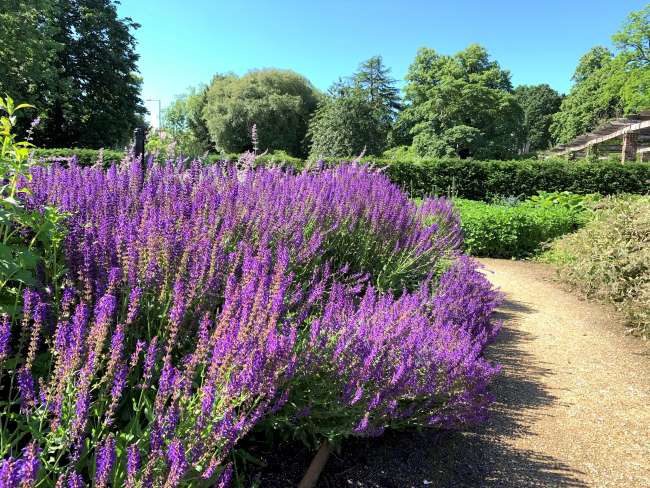
Also at the Agius Evolution Garden is Kew Garden’s famous rose pergola, which is made up of 26 varieties of roses.
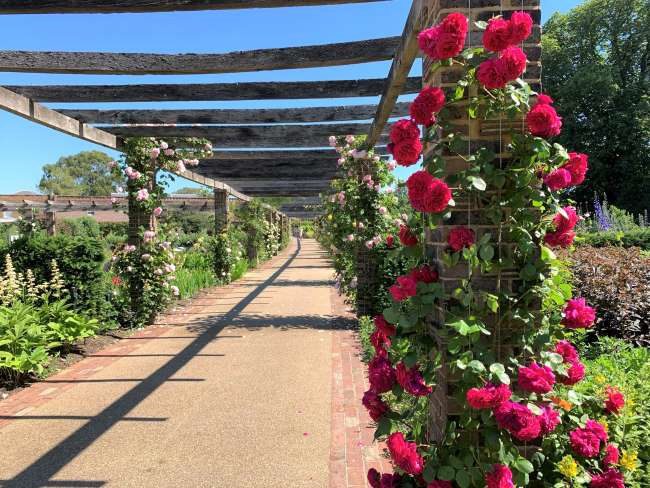
Kitchen Garden
On the other side of the rose pergola from the Agius Evolution Garden, you’ll find the Kitchen Garden where Kew Gardens grow edible plants to learn more about producing healthy and sustainable food. I love bringing the kids here during the summer to see the various crops, and in the autumn to see the pumpkin patch.
Related: Autumn in Kew Gardens
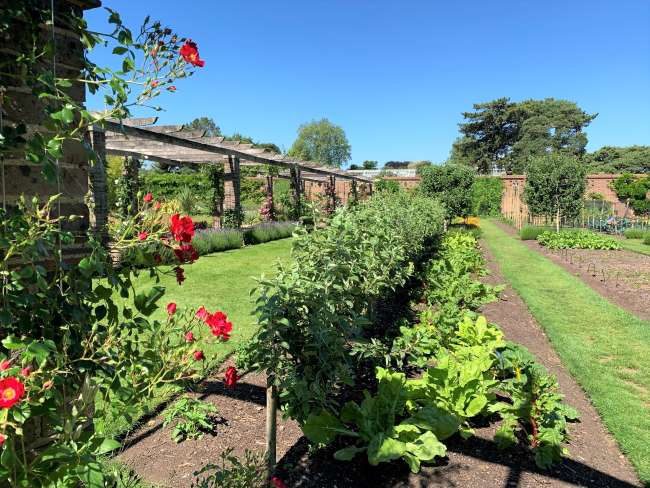
Keep an eye out for their Kitchen Garden sales, where they sell fruits and vegetables from the garden from May to September.
Rock Garden
The Rock Garden at Kew Gardens is over an acre in size and is located between the Princess of Wales’s Conservatory and the entrance to the Kitchen Garden. Originally constructed in 1882, this spectacular garden transports you to life in the mountains, with cascading waterfalls, an Alpine House landscape and wild-collected plants displayed from six mountainous regions.
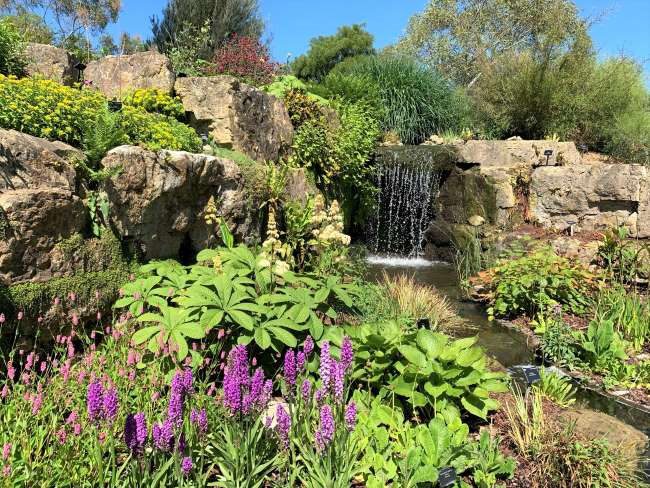
Each mountainous region is allocated its own area in the Rock Garden: the European Alps and Pyrenees; the Central Asian steppe and Himalayan mountain streams and meadows; the North American high alpine, prairies and bogs; the Windswept Patagonia; the Mediterranean scrub and South African bergs and kloofs; and the southern Alps of Victoria, Australia and the peaks of New Zealand.
Princess of Wales’s Conservatory
The Princess of Wales’s Conservatory is a glasshouse with 10 different climate zones under one roof. When visiting Kew in summer, keep an eye out for the California poppies growing at the glasshouse entrance.
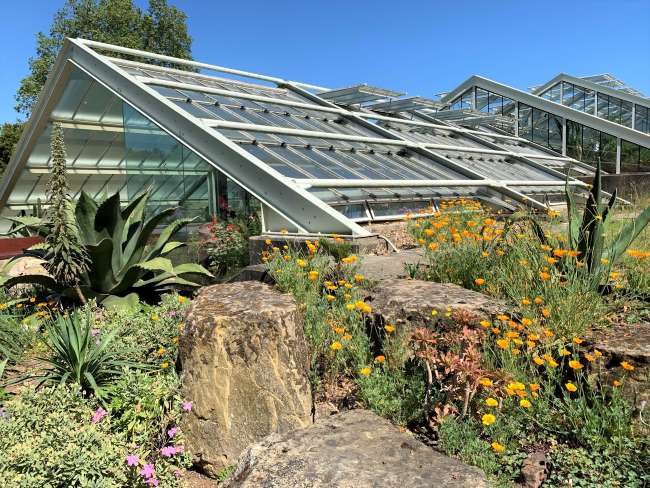
The two major climates taking up the majority of this glasshouse are dry tropics and wet tropics.
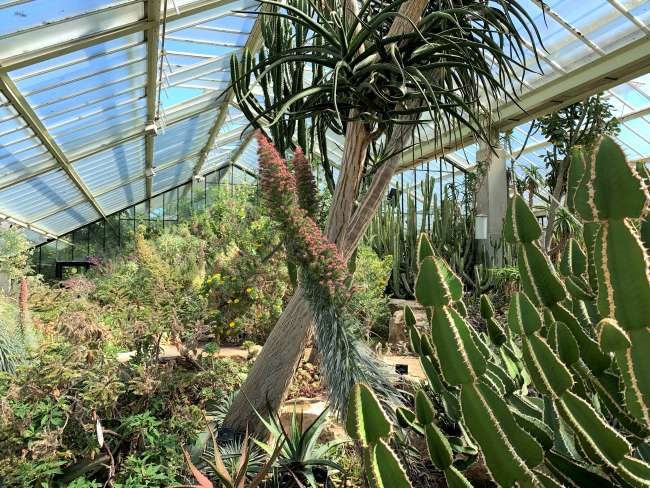
The Princess of Wales’s Conservatory is a pleasure to visit year round, and especially when there is the Kew Gardens Orchid Festival during February and March, when there are stunning, vibrant horticultural displays showcasing a country’s unique wildlife and plant diversity each year.
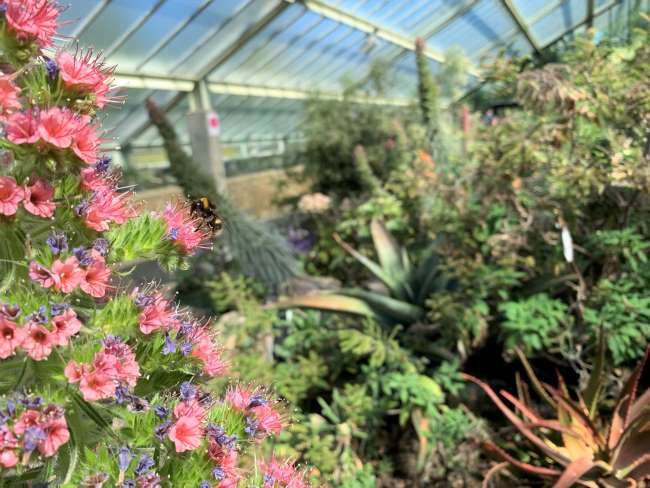
More photos of the Princess of Wales’s Conservatory and the stunning Orchids Festival displays through the years in my Kew Gardens Orchids Festival post.
Waterlily House
Summer is the best time of year to stop by the Waterlily House, a small, square glasshouse by the Palm House, to see the amazing Santa Cruz waterlilies, lotus flowers and other aquatic plants. The lily pads of the Santa Cruz waterlilies grow up to two metres wide!
Fun fact: the circular pond spans over 10 metres and is dyed black (using a harmless food dye) weekly to stop algae growth
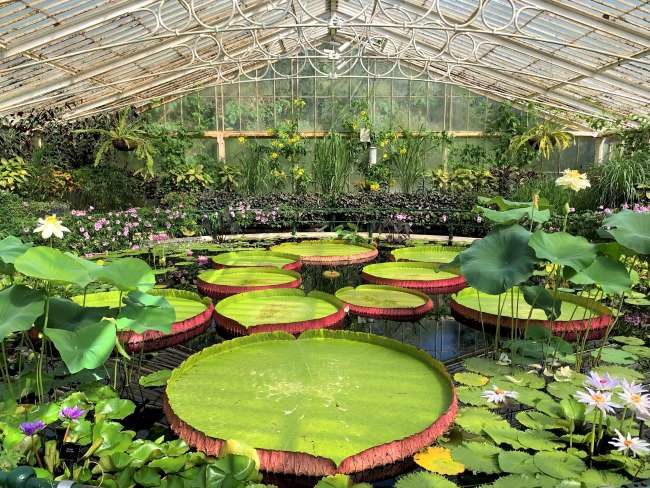
The Waterlily House is a listed building and the hottest and most humid glasshouse in Kew Gardens. It was completed in 1852 and was designed specifically to showcase the giant Amazon waterlily (their lily pads grow up to 3 metres wide), which you can now see at the Princess of Wales’s Conservatory
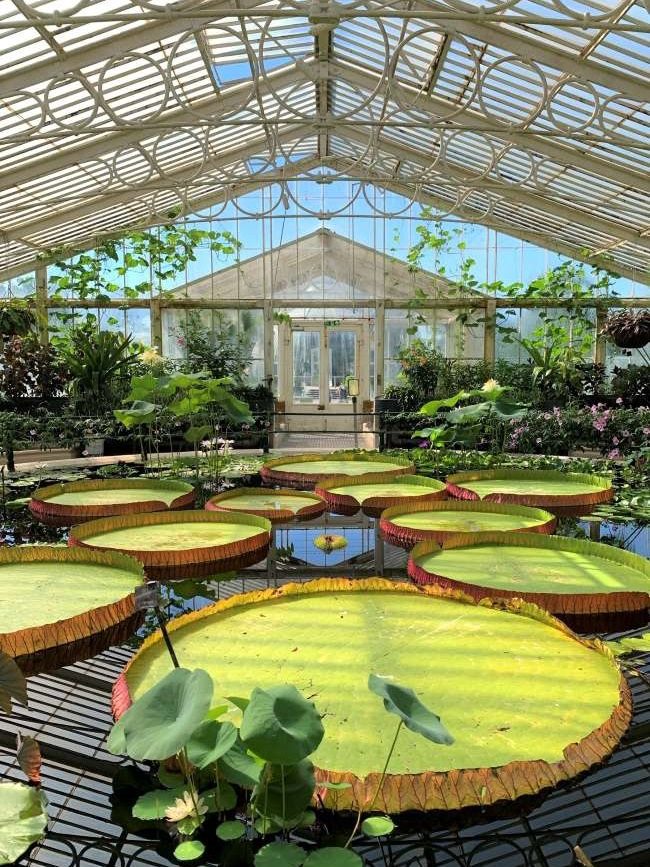
Redwood Grove
One of my favourite places to visit in Kew Gardens is the Pinetum, a 40 acre area within the Arboretum on the southernmost edge of Kew that is home to an incredibly diverse collection of conifer trees. It’s a quiet, peaceful part of the Gardens and where you’ll find the amazing Redwood Grove.
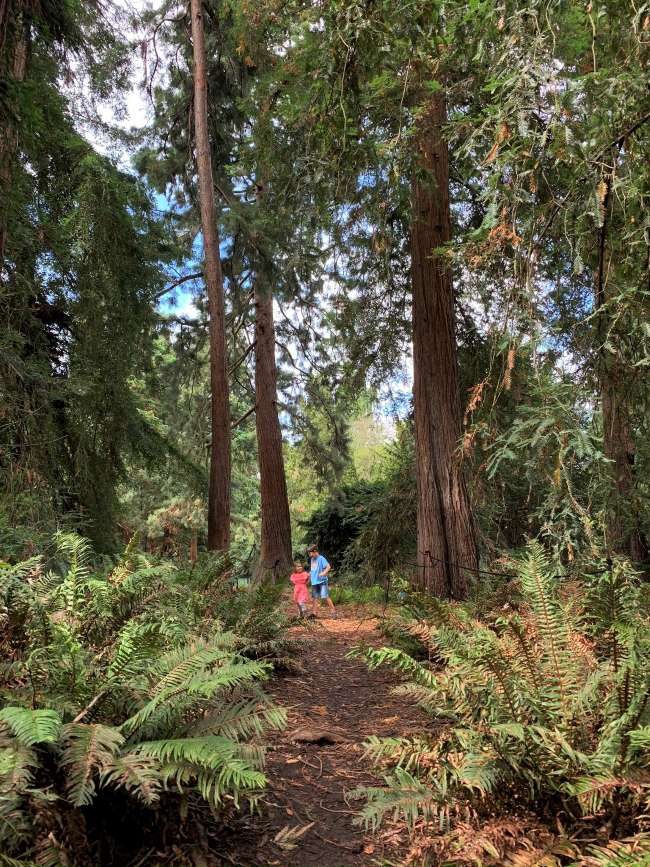
Kew Gardens have a mixture of coastal redwoods (Sequoia sempervirens) and giant redwoods (Sequoiadendron giganteum) in the Redwood Grove. You’ll find the tallest tree at the Gardens here, a 40 metre tall coastal redwood which is as high as a 13 storey building.
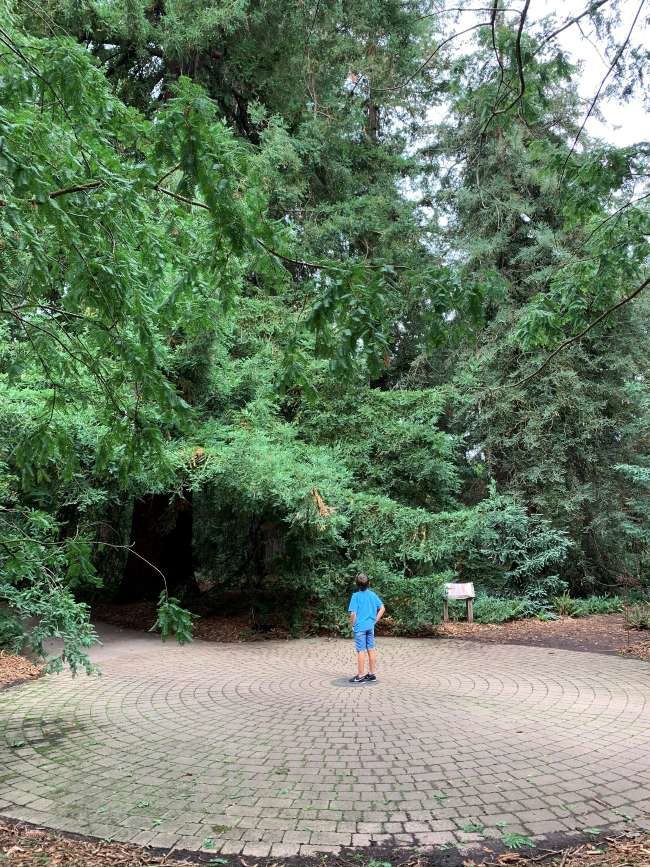
In the middle of the Redwood Grove, look for a round plaza of cobbles which has the diameter comparable to that of the trunk of a typical old-growth Californian giant redwood (8.2 m / 27 ft). It is fascinating to stand in the middle and get an idea of what a huge size an average giant redwood can grow to!
Log Trail
Nearby in the Natural Area, the Log Trail is another favourite spot to visit especially in the summertime. This natural log trail is made from storm-felled trees that have been put to use as a fun outdoor play area that winds through the trees.
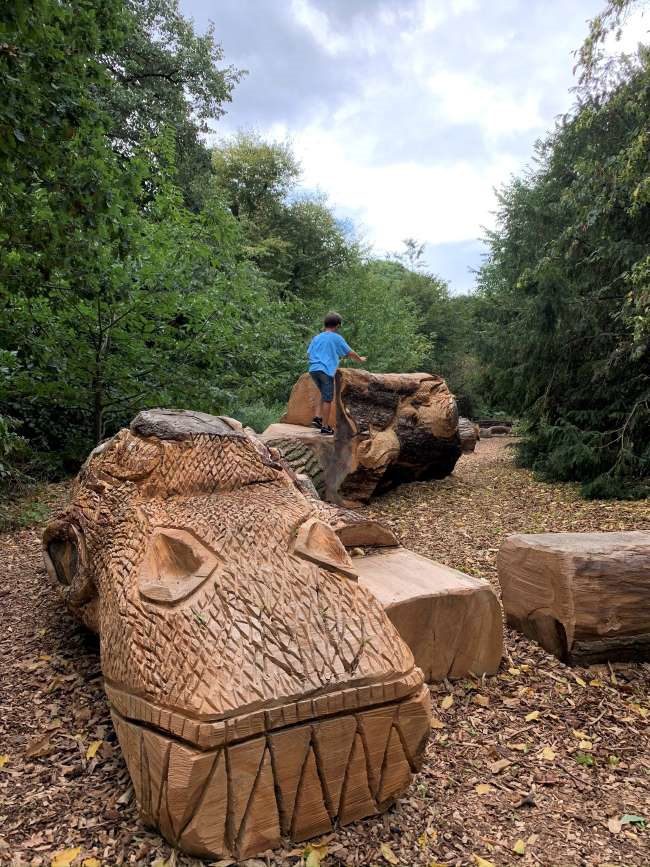
The Children’s Garden
Finally, one of the best playgrounds in London is the Children’s Garden at Kew Gardens that opened in 2019. It is a fantastic space based in a natural setting the size of 40 tennis courts, with highlights that include a sandy area with play houses and small slides for little ones, tall “worm-hole” tubes to slide down, an area with trampolines and wooden climbing frames.
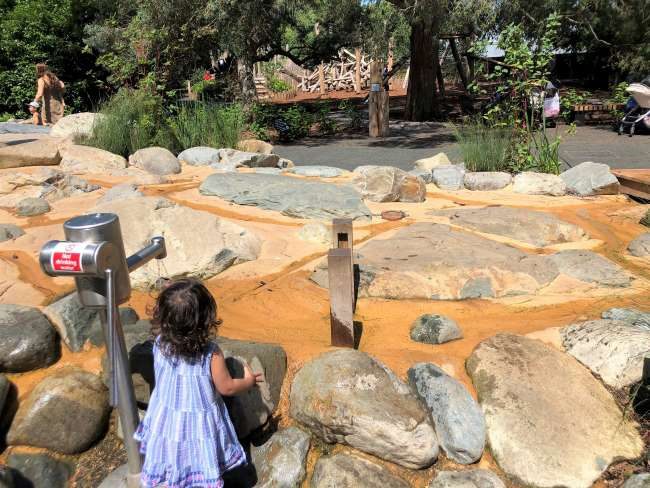
The kids love the water play area, which features log troughs, water tables and several pumps, plus there’s a splash pool in a shady spot which is perfect for little ones.
Read more: Children’s Garden at Kew Gardens
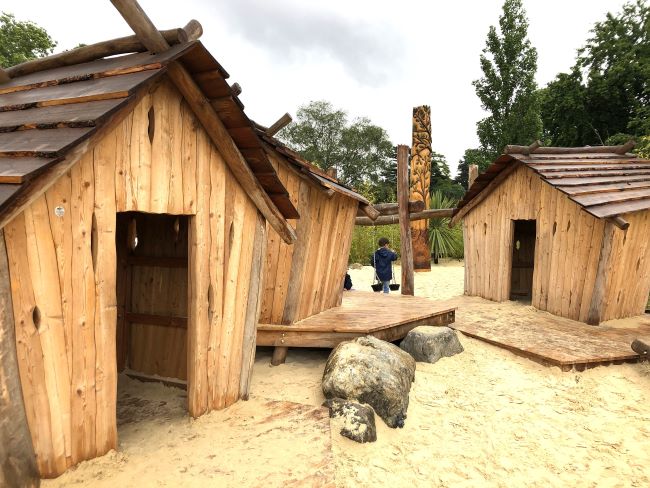
Visiting the Children’s Garden is including in your Kew Gardens ticket, and pre-booking is no longer required. All visitors are welcome to come and go throughout the day until one hour before the Gardens close.
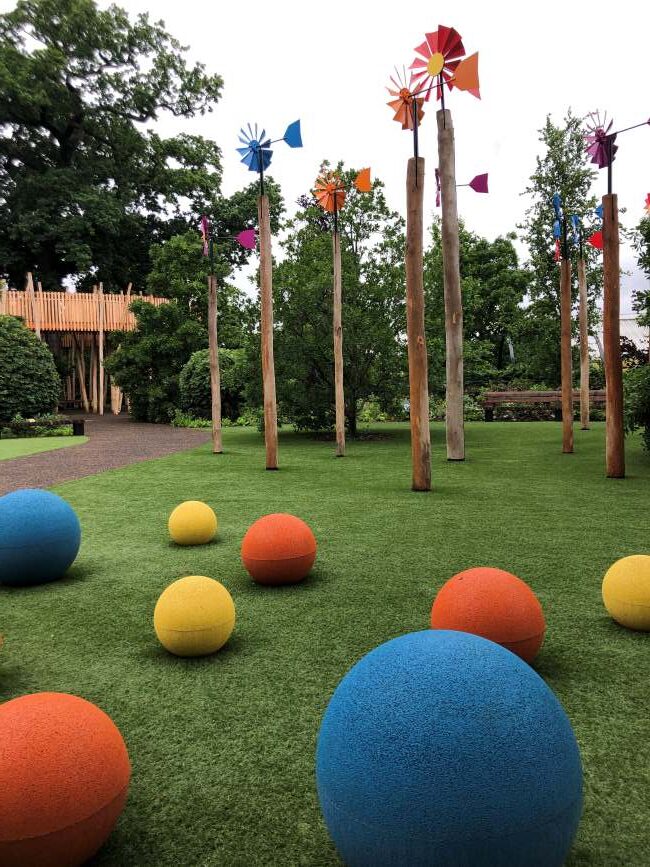
I hope you found these tips helpful for what to see and do when visiting Kew Gardens in summer! Find more ideas for things to do and family activities during the school holidays: Summer Holidays in London with Kids
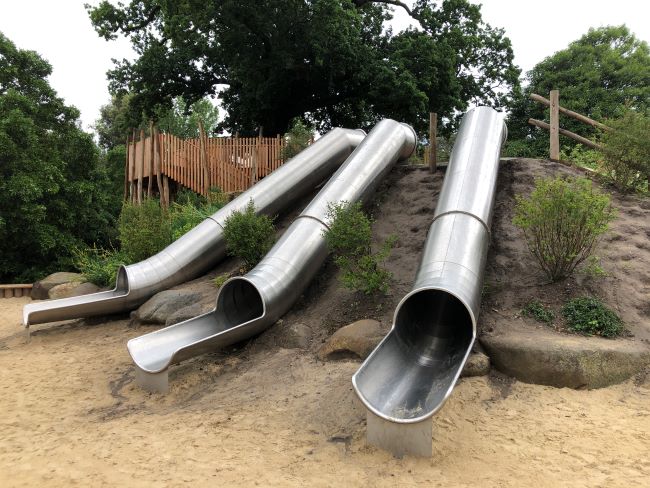
What’s On Summer in Kew Gardens London 2024
Kew Orchids Festival
3 February – 3 March 2024
For over 25 years, Kew Gardens has put on the Kew Orchid Festival during February and March, each year celebrating a different country’s biodiversity. This year, the Kew Orchid Festival celebrates the stunning natural beauty, incredible biodiversity and unique wildlife of Madagascar through extraordinary horicultural displays and installations.
Read more: Kew Orchid Festival 2024
Find more inspiration for February family days out in our February half term activities in London round-up post.
Kew Gardens by Season
Since there is always something new and unique to see throughout the year, I have been sharing advice on what to do and where to go when visiting Kew Gardens by season. Read on for more photos and information on visiting Kew Gardens at other times of the year;
Kew Gardens Address
Address: Royal Botanic Gardens, Kew, Richmond, Surrey TW8 3AB
2023 Opening Hours: Between 1 May – 31 August, Kew Gardens is open later on weekends and bank holidays. 10am to 7pm (last entry 6pm) on Monday to Friday; 10am to 8pm (last entry 7pm) on Saturdays, Sundays and bank holidays.
From 1 September, the opening times are the same throughout the week. 10am to 7pm (last entry 6pm) 1 – 30 September; 10am to 6pm (last entry 5pm) 1 – 28 October; 10am to 4pm (last entry 3pm) 29 October – 13 November; 10am to 3pm (last entry 2pm) 14 November – 7 January 2024.
Kew Gardens is closed on 24 and 25 December.
Tickets: Peak (1 February – 31 October) Standard tickets paid at the door are £21.50 for Adults, £9 for Young person and students (16 to 29 years old) and £5 for children (4 to 15 years old). Children under 4 years go free.
Tickets purchased online are cheaper for Young Person / Student (£8.50) and Adult (£17.00). You can pay an optional 10% donation which goes towards Kew Gardens’ conservation work. By agreeing to pay the donation, Kew Gardens can claim Gift Aid on the full ticket price if you are UK tax payer.
Closest Tube Station: Kew Gardens [District – Richmond branch and Overground services]
Parking: There is limited Ringgo parking around Kew Green (make sure to check for permit parking spots). Parking costs £7.00 for the day at the Kew Gardens Brentford Gate car park (TW8 3AF) which is accessed by Ferry Lane, a narrow turning off Kew Green.
Food and Drink: There are several restaurants at Kew Gardens, including the Orangery for coffee, cakes and light meals; the Pavilion Bar and Grill serving burgers and Mediterranean dishes; and the Botanical Brasserie for formal dining. Right next to the Children’s Garden, you’ll find the new Family Kitchen & Shop which has a stone-baked pizza oven, salad bar, artisan sandwich station, ice cream servery and more.
http://www.kew.org/visit-kew-gardens
Pin for Later – Summer in Kew Gardens London
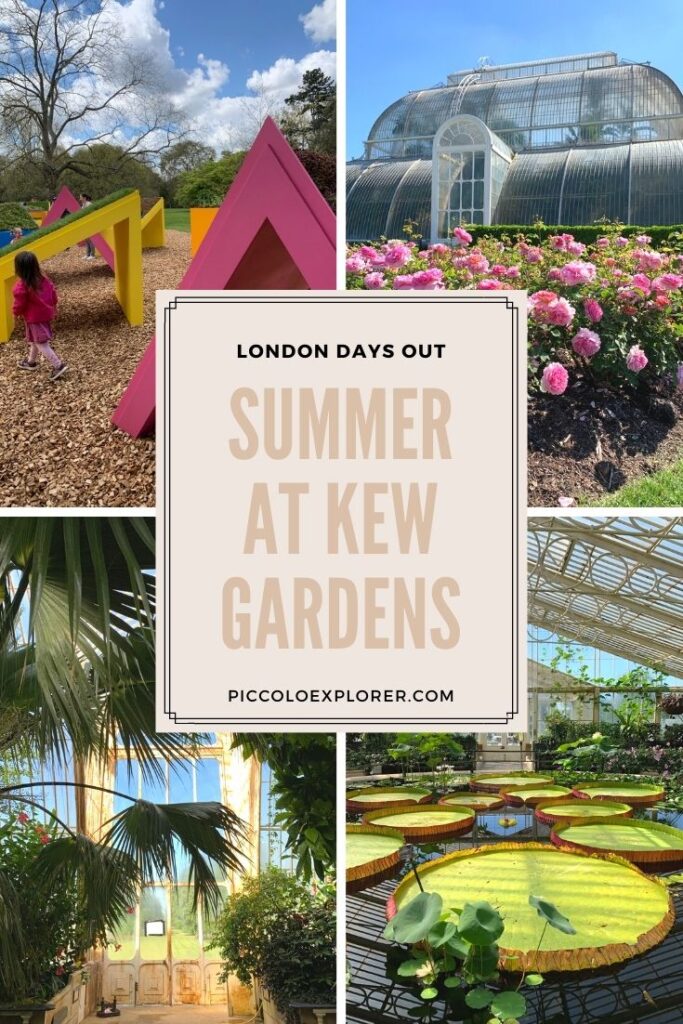
This post was updated with new photos and information about visiting Kew Gardens in Summer 2023.
